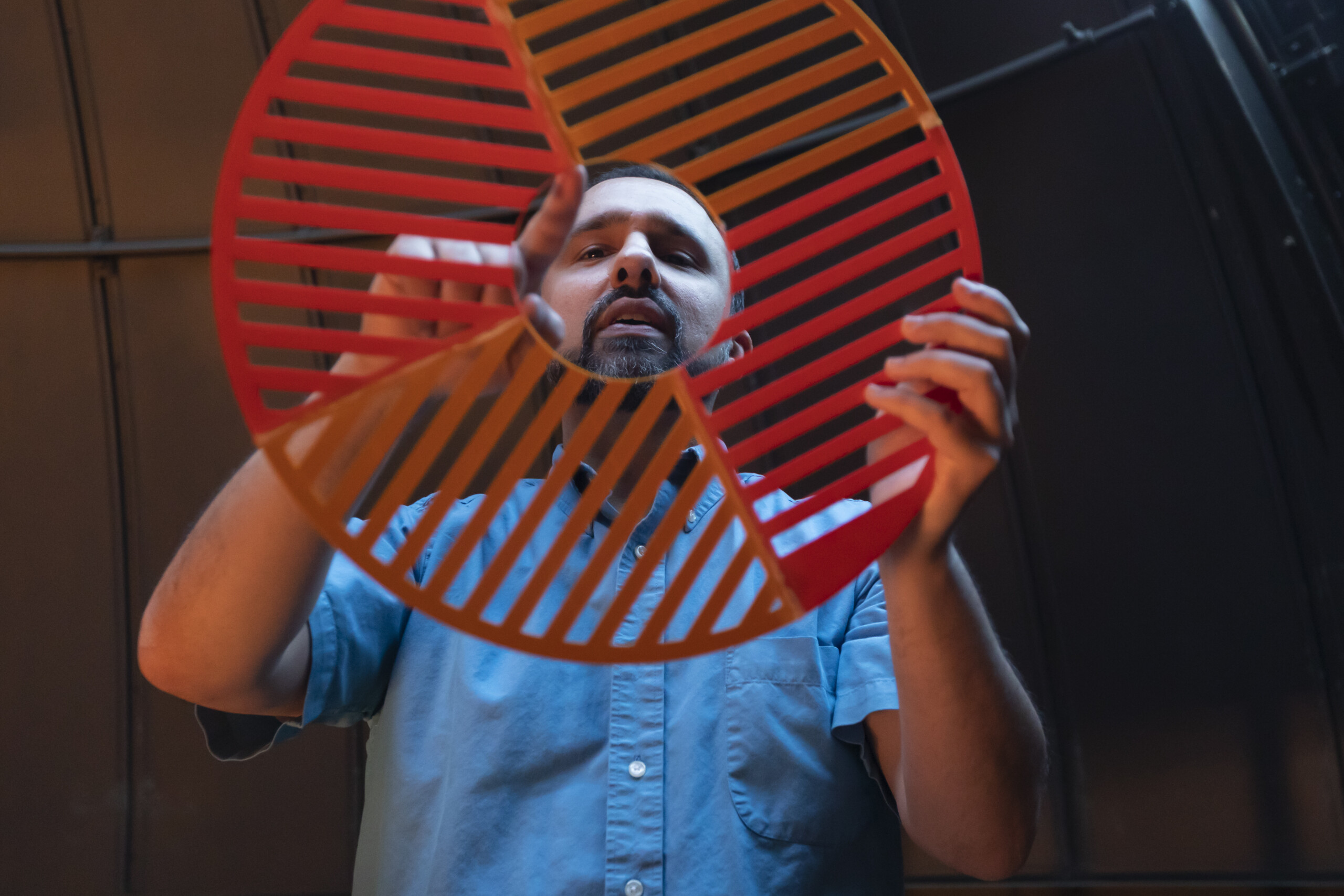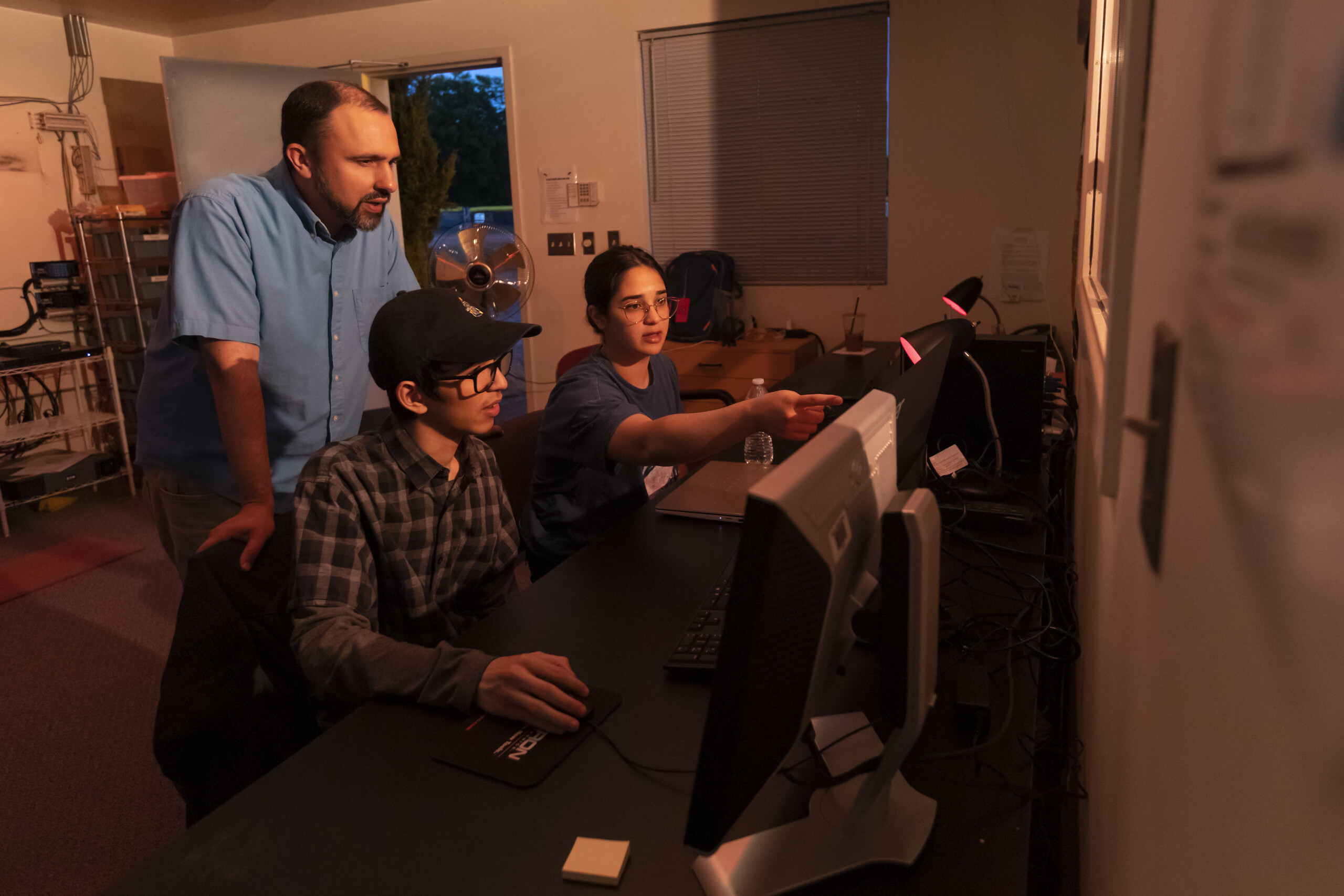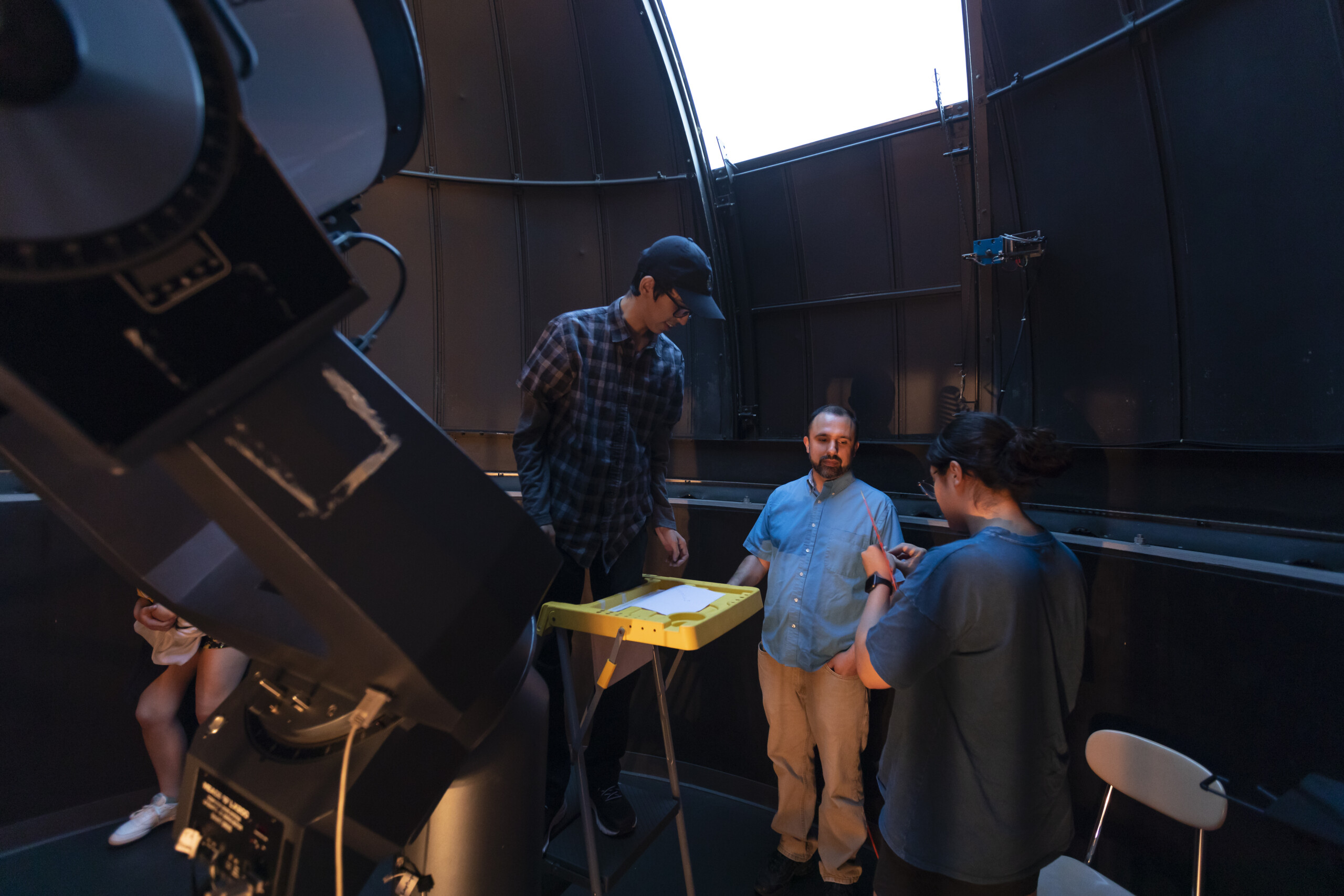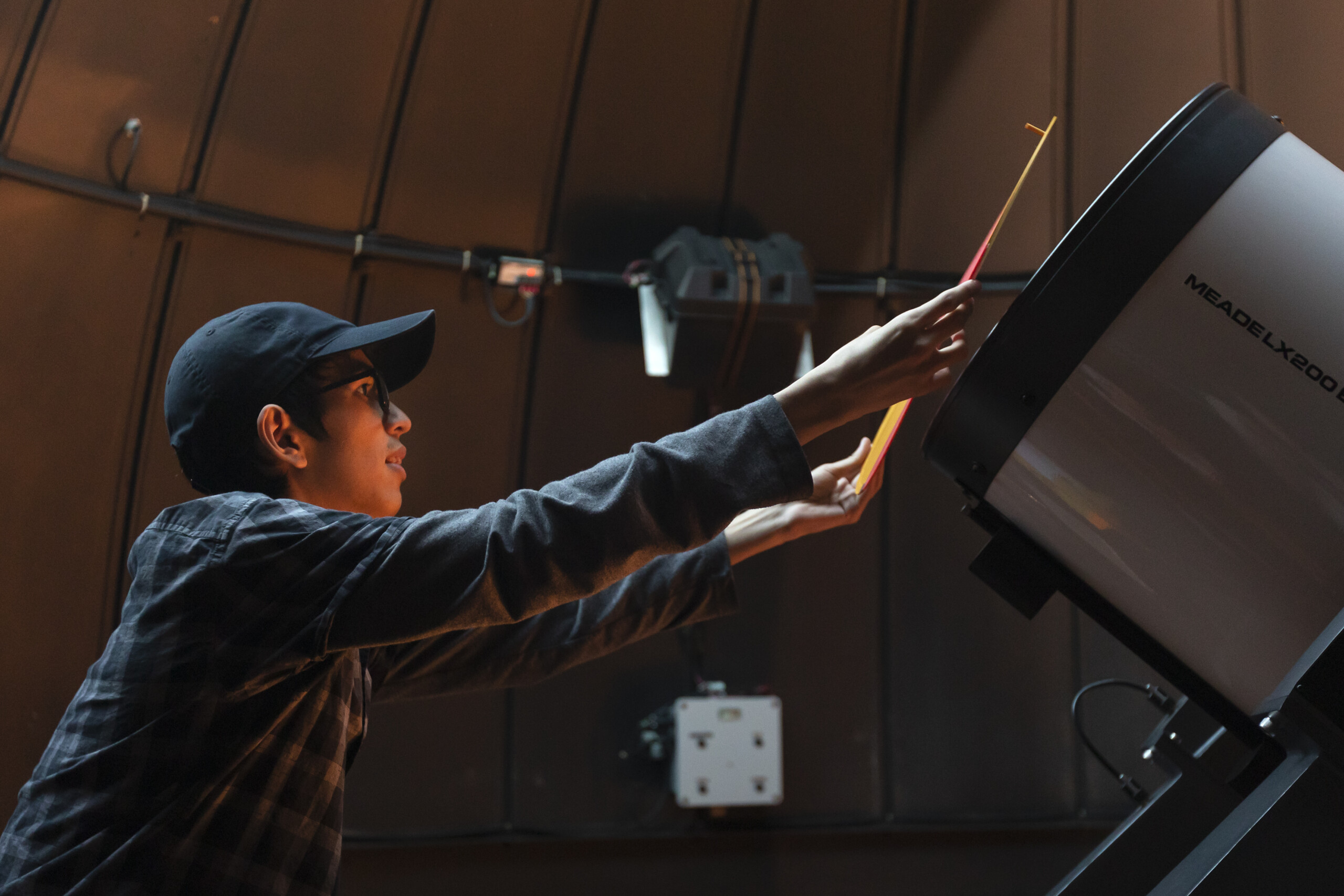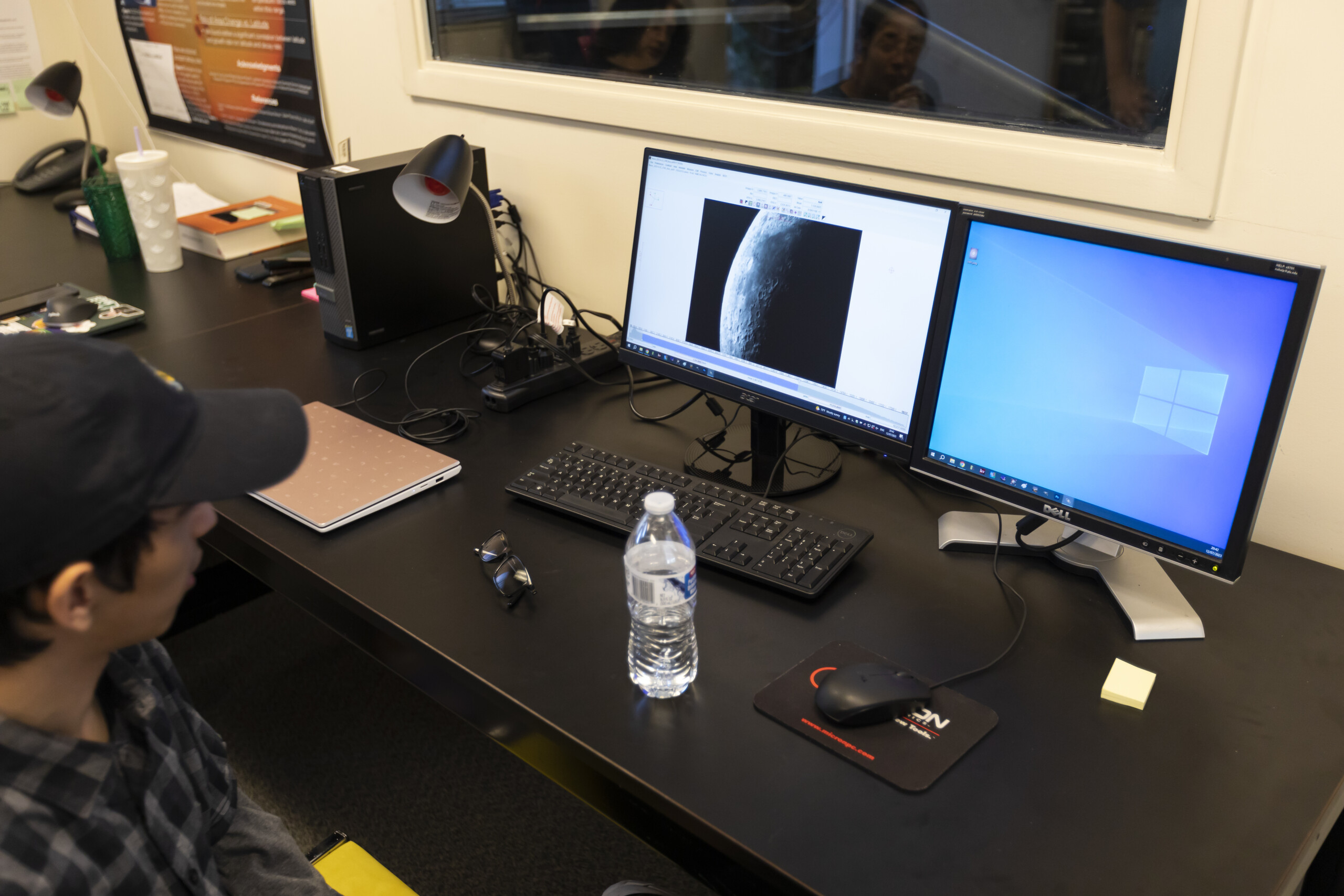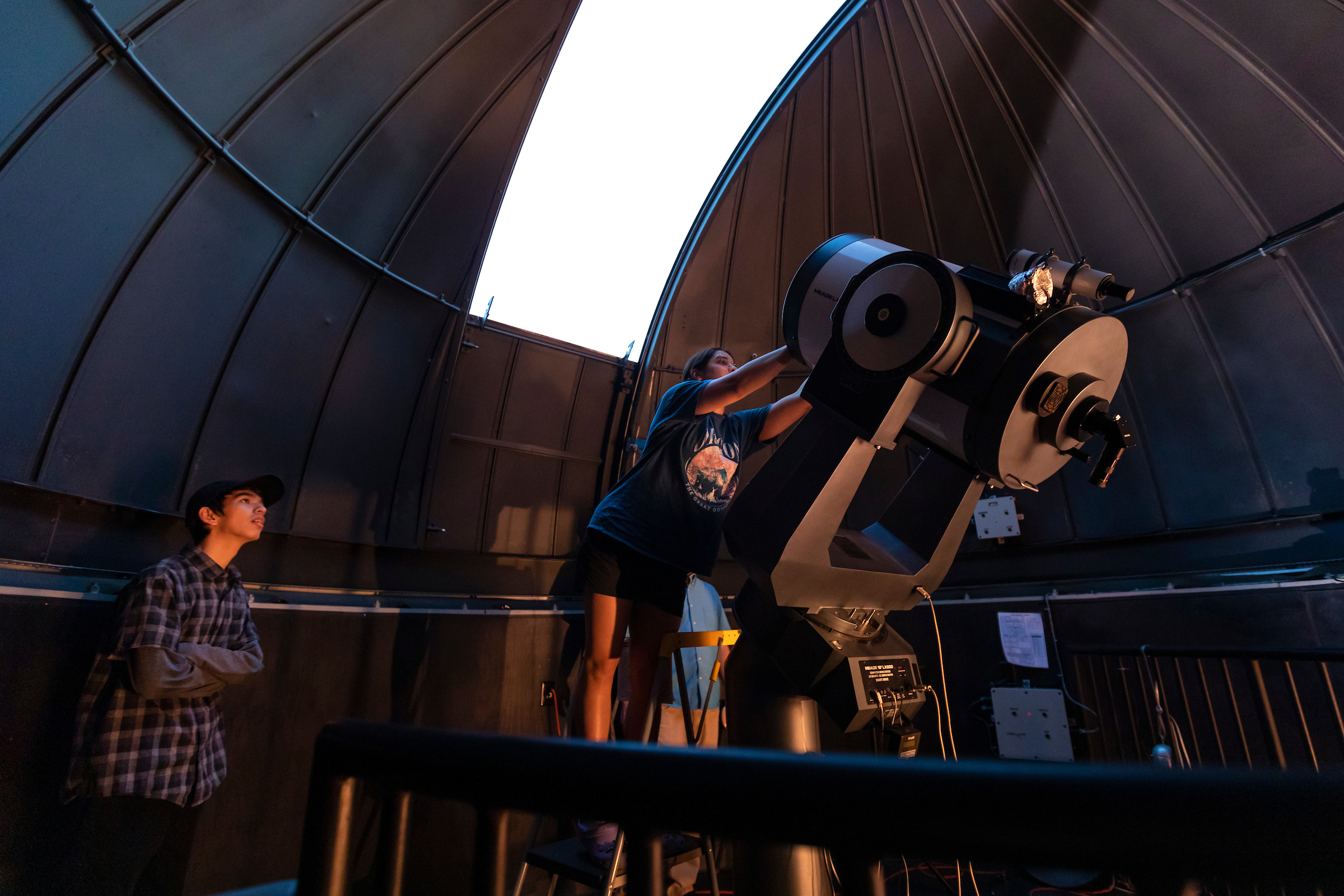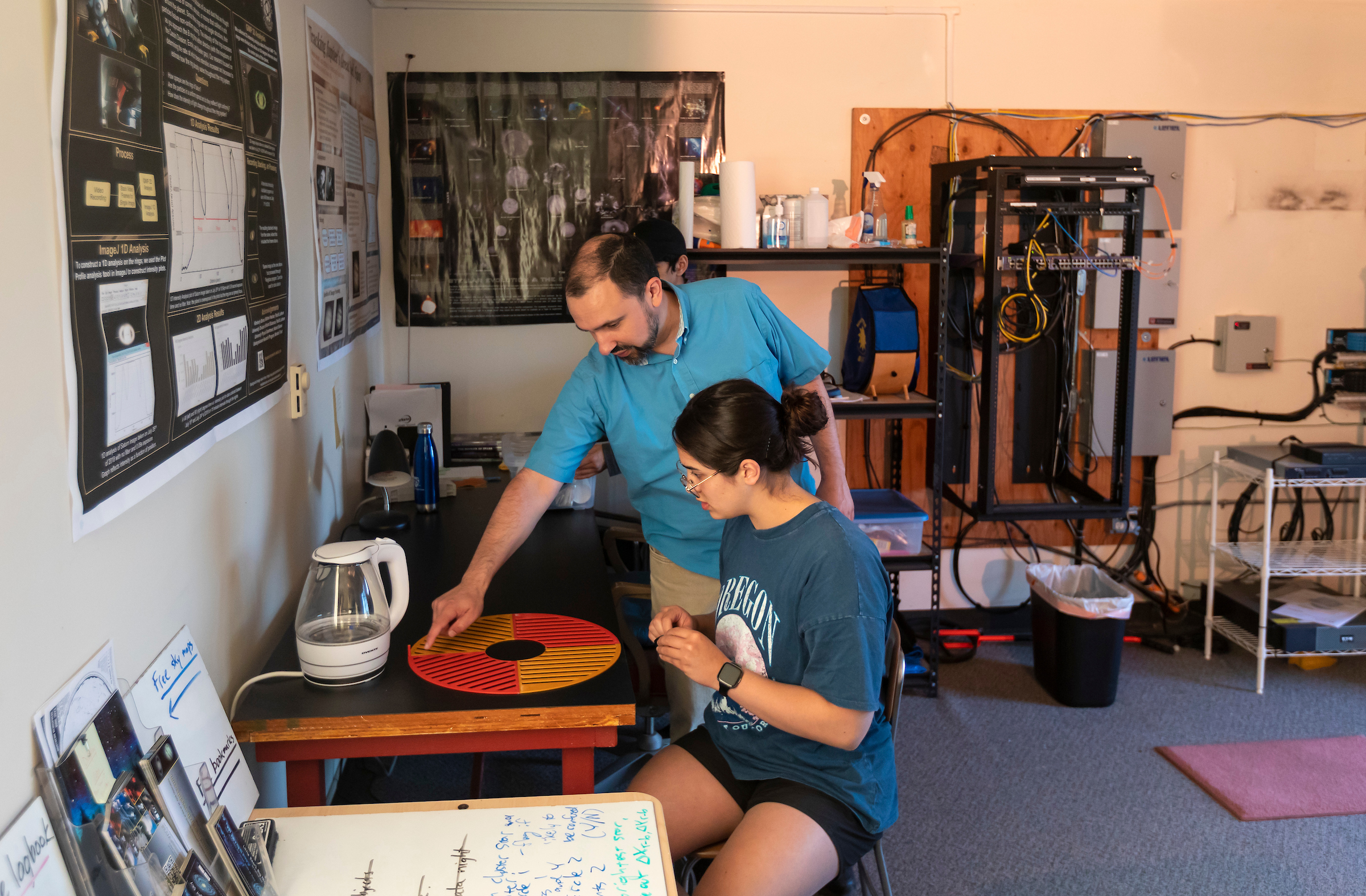Two PLU students spend the summer reading the stars
Physic professors Katrina Hay and Sean O’Neill and students Julian Kop ’24 and Jessica Ordaz ’24 observe and characterize variable stars and globular clusters at PLU’s W. M. Keck Observatory.
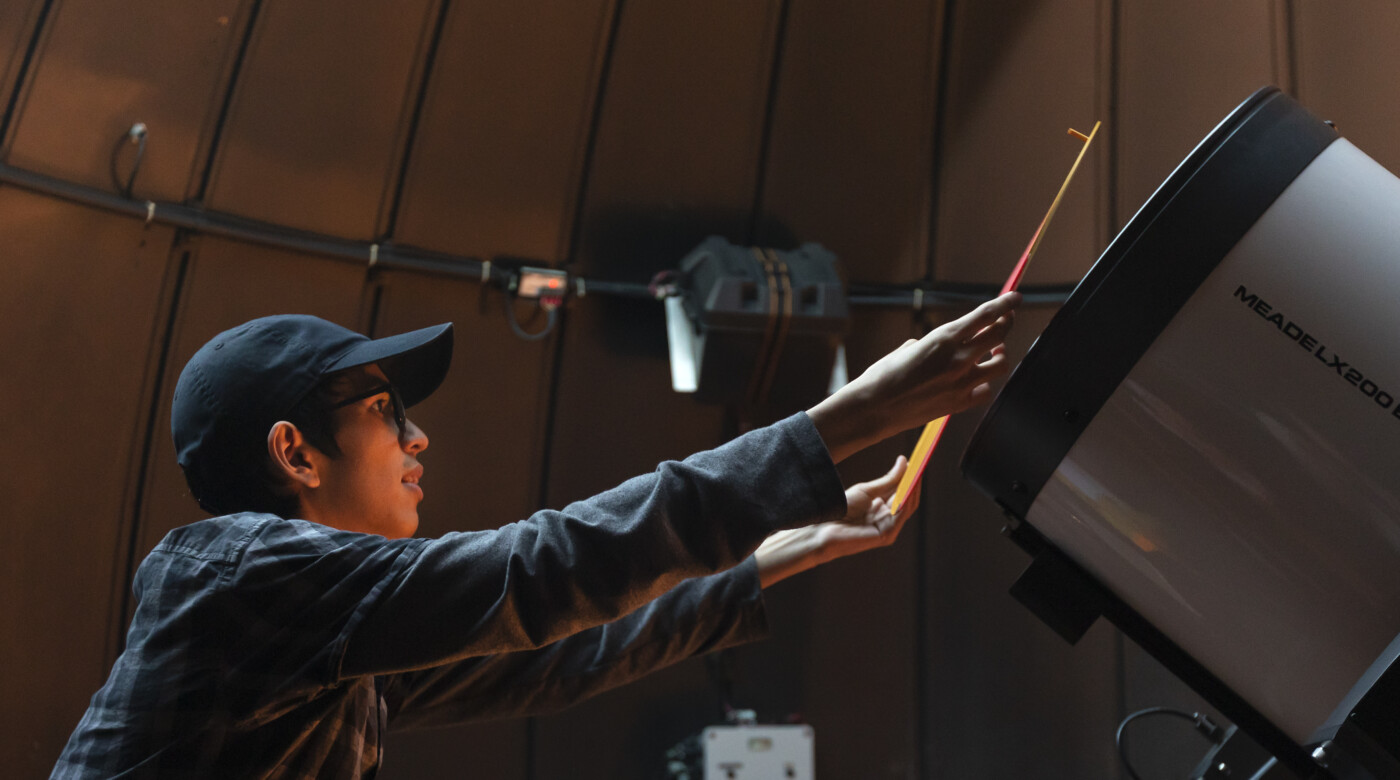
Image: As part of their summer research at PLU, physics professors Sean O’Neill and Katrina Hay, and student researchers Julian Kop (pictured) and Jessica Ordaz utilize the specialized telescope at the W. M. Keck Observatory to observe and photograph stars and globular clusters. (PLU Photo / Sy Bean)
“Capturing astronomy images is rewarding but can be challenging,” said professor of physics Katrina Hay.
“It requires long exposures or stacked images, focusing in cold dark conditions, climbing a ladder to access the telescope, tracking objects as they move across the sky, and merging several color-filtered images to make a full-color image. Then the physics begins! Our students optimize these skills to capture the best images for use in their investigations- observing dynamics, temperatures, and luminosity of celestial objects,” Hay concluded.
STUDENT VOICES: Kop and Ordaz share their summer research from the W. M. Keck Observatory
Julian Kop ’24 classifies variable star systems, data processing and modeling.
“Astronomy and Astrophysics have been my childhood and career interest since I was an elementary student, and engaging in undergraduate astronomy research kept me motivated and inspired throughout this entire summer,” reflected senior physics major Julian Kop.
Two star systems, RR Lyrae and 68 Herculis, exhibit remarkable fluctuations in brightness, rendering them ideal subjects for telescope observation, especially during the summertime in Tacoma. Kop photographed the stars as they underwent their luminous transformations, and by analyzing these images, he could determine the time it takes for the stars to go through their changes in brightness.
“My research is on Variable Stars or stars whose brightness is known to change over time. By operating the telescope and utilizing the observatory’s charge-coupled device (CCD) camera, I could image a small set of variable stars to track the changes in brightness,” said Kop.
Jessica Ordaz ’24 analyzes observations of globular clusters to estimate the minimum age of the universe.
“This was definitely the opportunity of a lifetime for me,” reflected Jessica Ordaz. “Astronomy was a childhood obsession of mine. YouTube videos, books, movies, and shows, I used to want to know everything about this field of study, so when I saw that my two favorite professors were leading an astronomy summer research, I knew I had to be a part of it.”
In the mesmerizing depths of the universe lies a treasure trove of history known as globular clusters. These stellar time capsules are home to some of the oldest stars in our galaxy, holding secrets of the past. Jessica Ordaz spent the summer studying these ancient star clusters using Hertzsprung-Russell diagrams to estimate ages and measure their brightness and temperature. Star clusters, M13, also known as the Hercules Cluster, are visible from Tacoma during the summer.
Ordaz continued, “Reflecting on my research experience, the unexpected issues with research never deterred me. I really started to smile at those snags in our workflow because I always came out knowing something new. As many frustrations as I may have experienced, I’d definitely choose to go through them again because I made some fantastic memories and developed lifelong skills I’ll forever cherish.”



